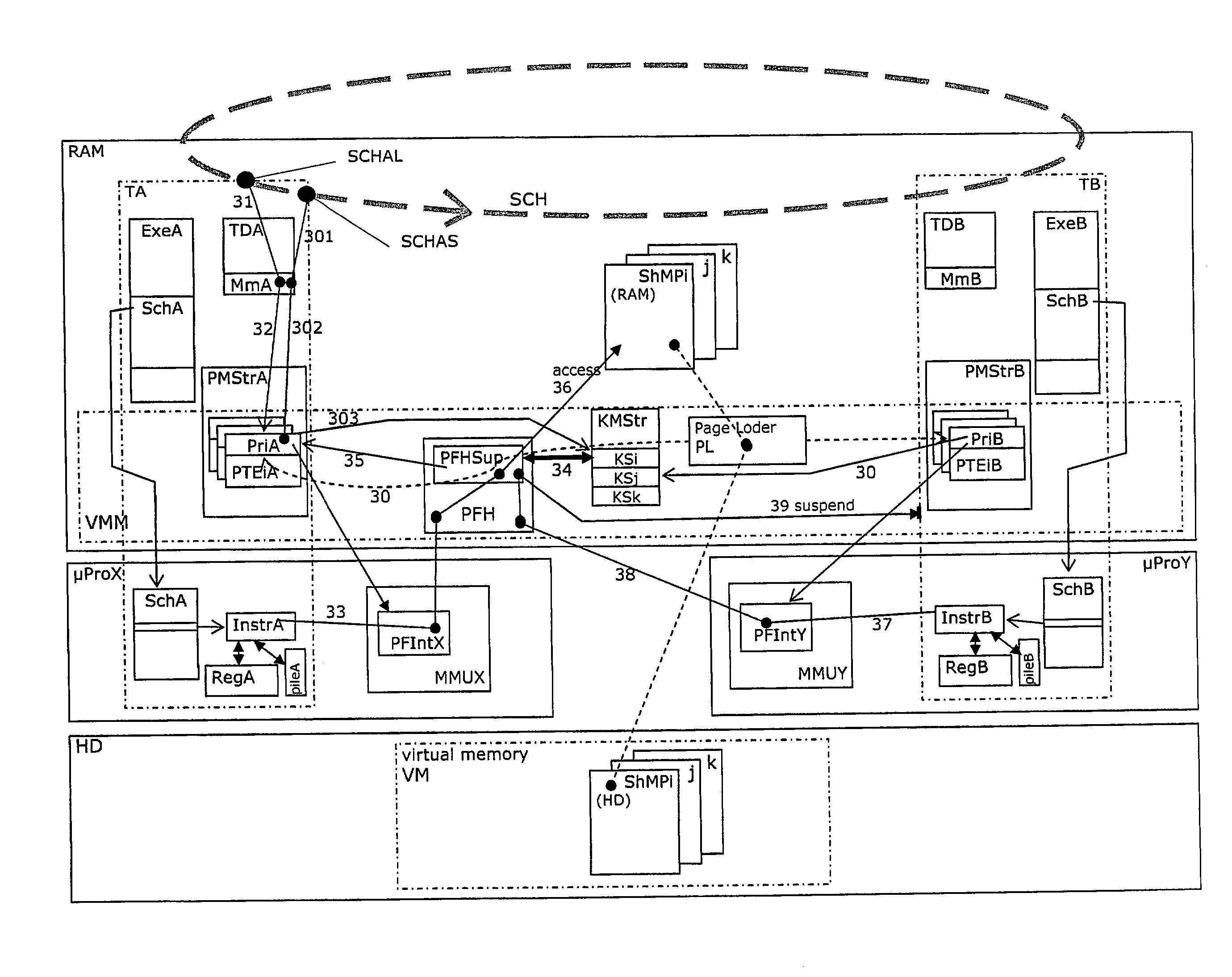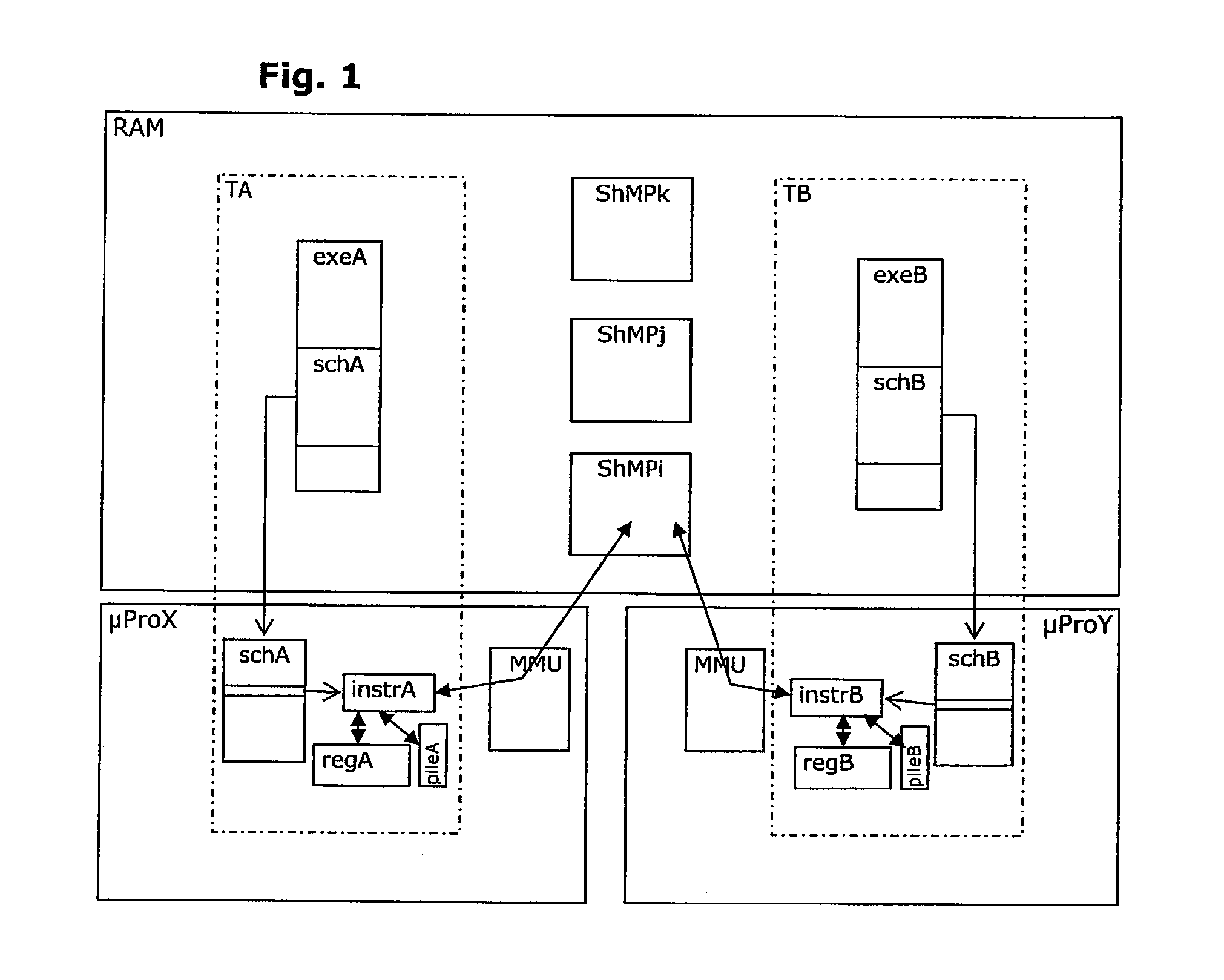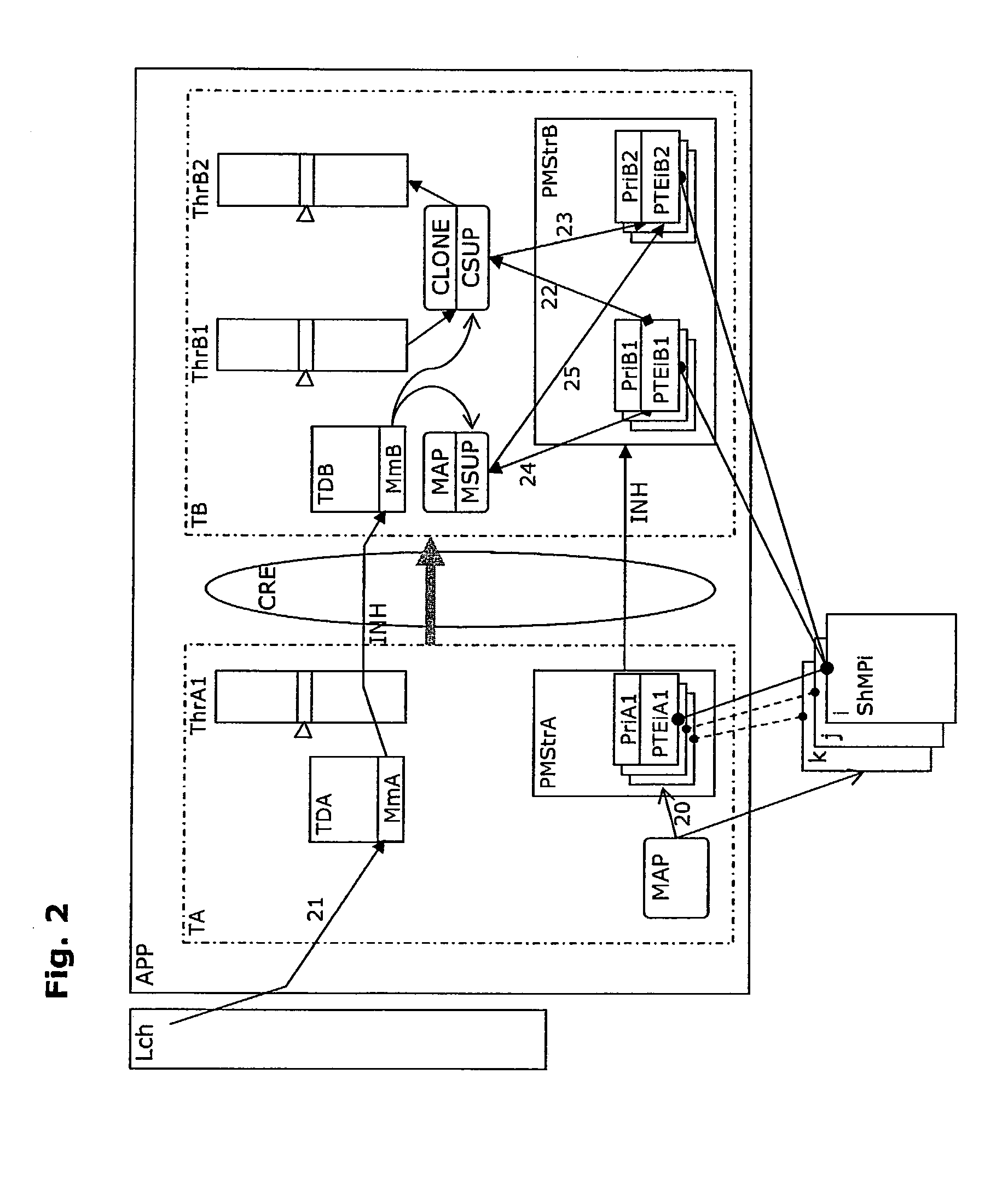Method for Managing Access to Shared Resources in a Multi-Processor Environment
a multi-processor or multi-computer environment technology, applied in multi-programming arrangements, program control, instruments, etc., to achieve the effect of flexible or better performan
- Summary
- Abstract
- Description
- Claims
- Application Information
AI Technical Summary
Benefits of technology
Problems solved by technology
Method used
Image
Examples
Embodiment Construction
[0044] In FIG. 1 an example of the functioning of a parallel multi-processor environment is illustrated, comprising a first processor μProX and second processor μProY in a multi-processor environment, for example, a system of the Linux type. These two processors each execute a task in parallel, TA and TB respectively, within a single working memory space RAM, and are coordinated by a scheduler. During an activation period of each task TA and TB, a sequence SchA, SchB of the instructions from its program EXEA, EXEB will be executed in a processor μProX, μProY. During the execution of an instruction InstrA, InstrB from this sequence, the processor will be able to use resources which are internal to it, such as the registers RegA, RegB a stack PilA, PilB.
[0045] Within the working memory RAM, several shared memory zones ShMPi to ShMPk are defined, for example by an instruction of the “map” type, and accessible from the different tasks TA and TB directly by their physical address.
[0046...
PUM
 Login to View More
Login to View More Abstract
Description
Claims
Application Information
 Login to View More
Login to View More - R&D
- Intellectual Property
- Life Sciences
- Materials
- Tech Scout
- Unparalleled Data Quality
- Higher Quality Content
- 60% Fewer Hallucinations
Browse by: Latest US Patents, China's latest patents, Technical Efficacy Thesaurus, Application Domain, Technology Topic, Popular Technical Reports.
© 2025 PatSnap. All rights reserved.Legal|Privacy policy|Modern Slavery Act Transparency Statement|Sitemap|About US| Contact US: help@patsnap.com



